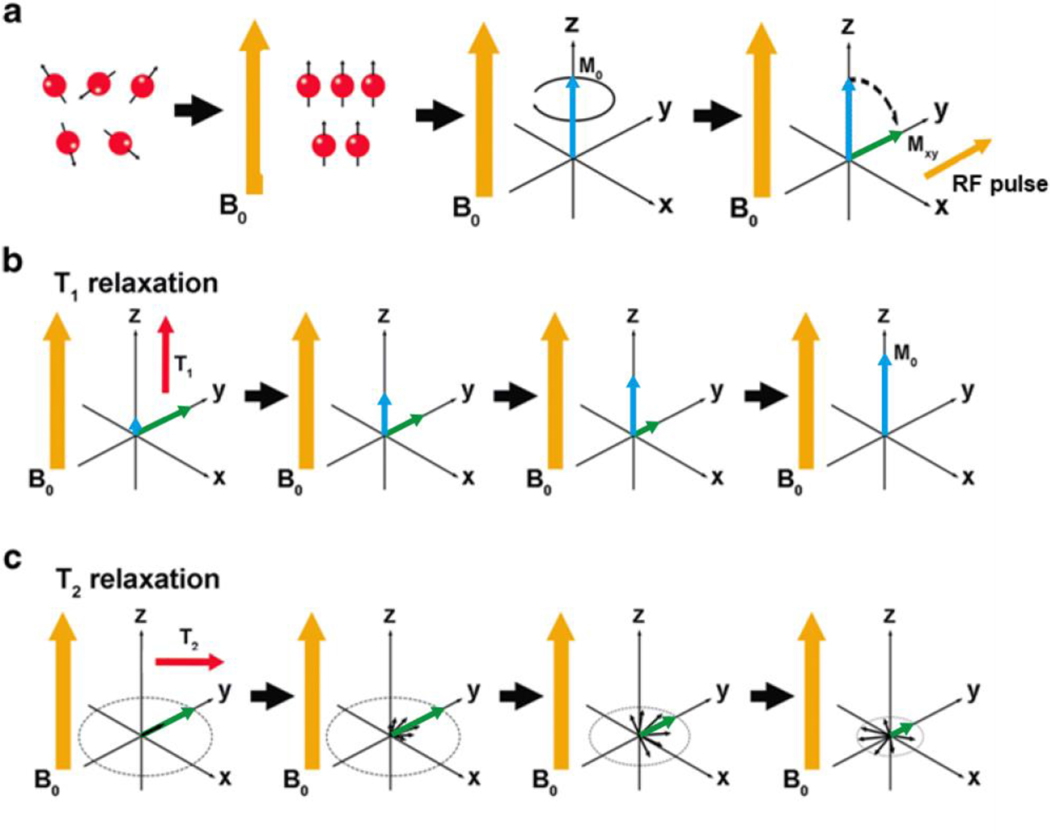Figure 2.
Schematic representation of the basic principles of MRI. (a) When an external magnetic field B0 (orange arrow) is applied (z-direction), protons (red spheres) tend to align with B0 (note that the depiction here unrealistically shows all protons aligned with B0, but there is actually only a slight preference for this alignment). This alignment results in a net magnetization vector (M0, blue arrow). When an orthogonal RF pulse is applied, M0 tilts 90° into the transverse (x-y) plane (Mxy, green arrow). The magnetization returns to equilibrium through two processes: T1 and T2 relaxation (b) T1 relaxation: T1 is a measure of the time it takes the initial longitudinal magnetic moment (M0) to recover. (c) T2 relaxation: T2 measures the loss of the transverse magnetic moment (Mxy) due to dephasing. (Reproduced with permission from[111], Copyright © 2019 Mastrogiacomo).

